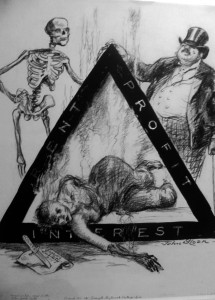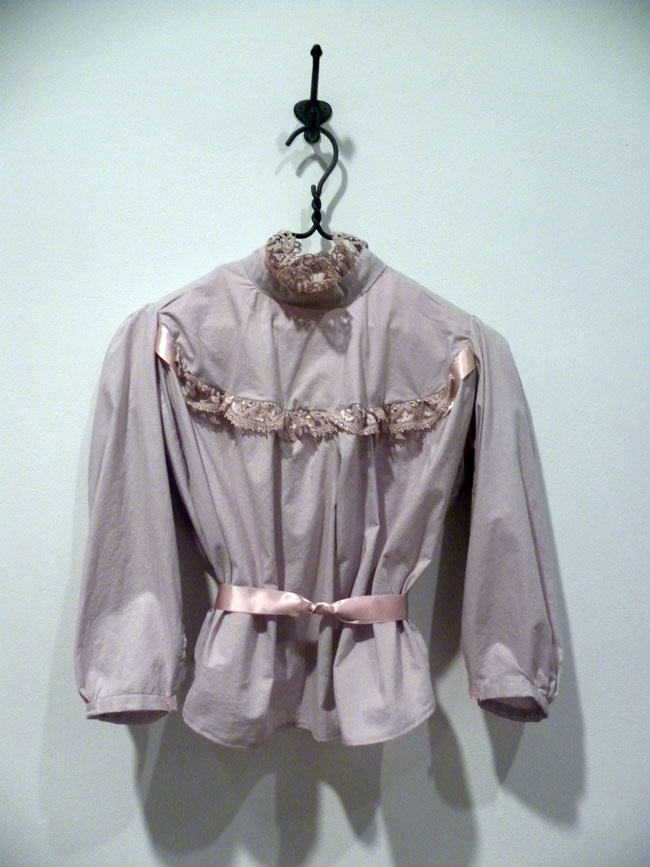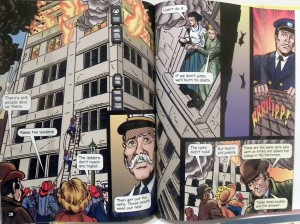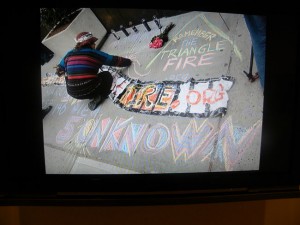Triangle Shirtwaist Factory Fire: An Exhibition
The first exhibition that I saw on my trip to the East Coast to promote my book was at the Grey Art Gallery at NYU called “Art Memory Place, Commemorating The Triangle Shirtwaist Factory Fire”.
In this era of attacking public service workers and their unions, this could not be more timely to remind us that the protections and unions that workers have are a result of atrocities like the Triangle Fire. Young working class women newly arrived in the US wore these shirtwaists with pride.
At the Triangle Shirtwaist Factory mostly Jewish and Italian immigrant women worked long hours in crowded spaces and unsanitary conditions. 20,000 workers had gone out on strike in 1909 demanding better conditions and recogntion of their union the International Ladies Garment Workers Union ( ILGWU) When a fire broke out on March 25, 1911, on the 8th floor, it quickly spread to the 9th and 10th floors. Many of the stairways and doors were blocked, Some climbed to defective fire escapes, and some jumped out of windows to their death. ( Apparently all executives escaped through the roof). The horrendous loss of life, more than 150 women and girls, shocked New Yorkers and the whole country.
Pauline Newman, organizer for the ILGWU, declared that “the way to honor the memory of the dead is to build up a strong and powerful organization that will prevent such disasters … and serve as a monument to the dead. Lest we forget!”
From the 1920s to the early 1940s the union grew and advocated for better working conditions. Frances Perkins, who was an eyewitness to the fire, was Secretary of Labor under Franklin Roosevelt in the 1930s and a leader in working place reforms.
Telling the story of the Triangle Shirtwaist Facotry is also the graphic novel by Jessica Gunderson.
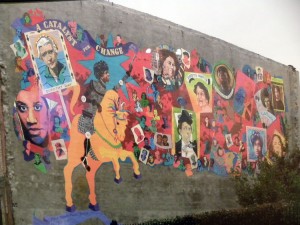 March 25, 1961, at the fiftieth anniversary, new attention came to the fire. In the Grey Art Gallery exhibition, the art dates from the time of the fire to the 1960s and the 1990s and into the 21st century. In this mural, honoring women who pursue justice, in the upper right corner is Dorothy Day on a poster, in the lower left is Audre Lorde, the woman on horseback in Shirley Chisolm, and there are dozens of others.
March 25, 1961, at the fiftieth anniversary, new attention came to the fire. In the Grey Art Gallery exhibition, the art dates from the time of the fire to the 1960s and the 1990s and into the 21st century. In this mural, honoring women who pursue justice, in the upper right corner is Dorothy Day on a poster, in the lower left is Audre Lorde, the woman on horseback in Shirley Chisolm, and there are dozens of others.
In the early 21st century the project CHALK honored the women who had died with chalk drawings on the sidewalk.
With Free Trade Agreements destroying both unions and working place protections, we are now back where we started with women and men in sweat shop conditions making the clothes that we wear. That point was also made in the exhibition.
And more than that today the unions and their rights that were so hard won, are under attack: the financial crisis is not the fault of the oligarchs who have so much money. Oh No. According to the new Republicans, it is the fault now of public sector unions and their reitrement plans. Here’s to Wisconsin and its 10,000 protestors. As Noam Chomsky said on Democracy Now, maybe America is waking up, inspired by the example of the brave Egyptian youth who brought down an oppressive government. Nationwide strikes are currently occuring in Egypt.
This entry was posted on February 18, 2011 and is filed under Uncategorized.

